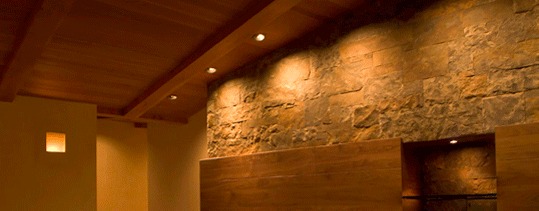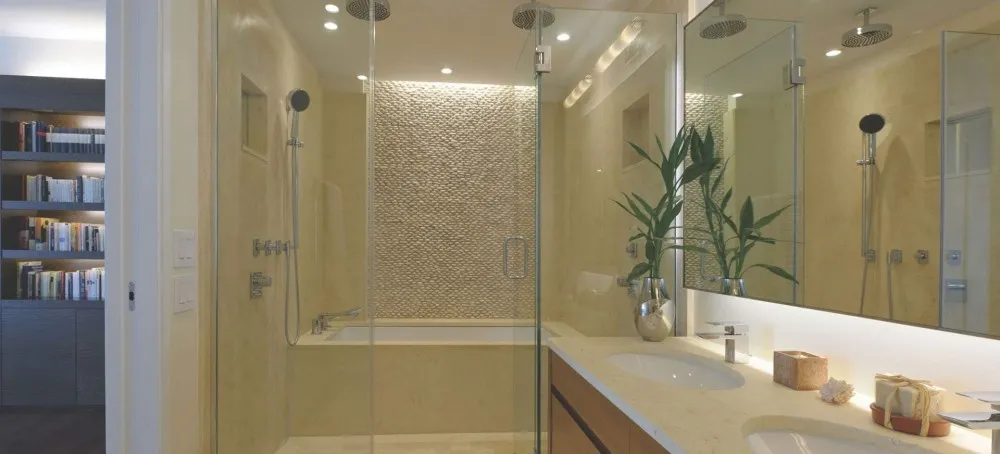How to Light your tile
September 16th, 2021
Wall Grazing vs. Wall Washing - first, the similarities
Both wall grazing and wall washing lighting techniques add visual interest to a wall surface you want to emphasize. Using either grazing or washing lighting techniques creates a lighting effect that evokes a vibe within a space adding much to the overall design. These two techniques are achieved through similar methods but produce different effects.
Now, what are the differences?
Wall Grazing Lighting:
Wall grazing is a lighting technique where lights are positioned close to a wall, either from the floor or ceiling, to force the beam of light to hit the wall at a narrow angle from the top to bottom evenly lighting the wall entirely (as seen to the left).
The lighting reflects light off of the texture of the wall and creates shadows. Shadows can be deepened or diminished by moving the lights closer to or further from the wall, which changes the angle. The surface that is being illuminated needs to be perfectly installed as there is nowhere for imperfections to hide. Read more about proper tile installation methods. Want to hide imperfections? Keep reading, Wall Washing may be the technique for you!
 Wall Wash Lighting:
Wall Wash Lighting:
While wall grazing highlights the texture of a wall through shadows, wall washing delivers a more direct light onto the surface enhances its smoothness by eliminating shadows. A wall washing effect is produced by mounting lights on the ceiling so that the beam of light falls on the wall at a wide-angle. By installing ceiling lights at least 2.5 to 3 feet away from the wall, you can wash 8 to 9 feet of vertical wall space with light.
This type of lighting makes sense in places like art galleries, where the goal is to display multiple pieces of art hung on a blank wall.
Good applications for Wall Wash Lighting are:
Wall Grazing vs. Wall Washing: Which is for your project?
The main difference is the way the light hits the wall. Mounting a light less than 2 feet away from a wall will produce a consistent beam of light grazing the outside edges of the surface showcasing the texture, whereas directing a light source at a distance over 2.5 feet will widen the angle of the light beam and flood light into the space to wash a wall out.
- Wall grazing lighting is best on textured walls and when you want to add visual interest. Wall grazing might exaggerate the shadows too much and emphasize imperfections.
- Wall wash lighting is best for smooth, flat walls and when you want to focus attention on wall hangings rather than the wall. If your wall has imperfections you want to hide, wall wash lighting can help wash them out.





